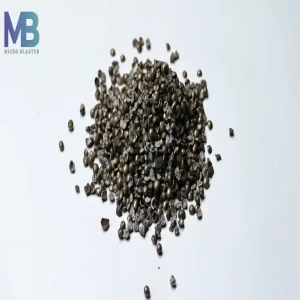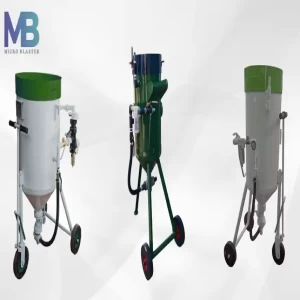Search

Different Types of Spray Gun
Spraying is a method of coating that utilises a spray gun.

A version on the spray coating technique in which the material is melted and propelled to the surface via a small explosion of a combination of gaseous fuel, oxygen, and the powdery coating material. It encompasses both low- and high-velocity thermal spray powder, red, and wire flame techniques.
Types of spray guns:
- Flame spray gun
- Thermal Spray Gun
- HVOF Guns
- Zinc Spray Gun
- Metalizing Gun
- Wire Flame Spray Gun
- Rod Flame Spray Gun
- Powder Flame Spray Gun
- Arc spray guns, each of which has a number of subsets.
- Electric arc spray gun
- Twin Wire Arc Spray Gun
Different Type of Spray Gun for Coating
#1. Flame Spray Gun
Flame spraying is typically used to apply abrasion-resistant coatings on nickel, chrome, andself-fluxing alloys that are then heat treated to metallurgically link them to the substrate.Compressors employ abradable coatings to cleanse machine elements. A Flame Spray gun produces a blaze within which powder is injected. The molten powder particles are projected onto the work piece to coat it. Heat treatment at roughly 1000oC is often used to ‘fuse' coatings to substrate surfaces.
#2. Thermal Spray Gun
The Thermal Spray Gun is used in coating techniques that include spraying melt materials onto the surface to improve polishing and eliminate dust objects. Thermal spray guns coat surfaces up to several millimetres thick, depending on the requirements. Metals, alloys, ceramics, polymers, abrasives, and composites are all suitable for thermal spraying. Using a thermal spray gun extends the life of sand blasting equipment by expanding the rotating shaft. Compared to other coating methods, thermal spraying can provide a thick covering over a big area quickly.
#3. HVOF Guns
High-Velocity Oxygen Fuel, abbreviated HVOF Gun, refers to high-speed oxygen combustibles, implying that this approach is concerned with molten materials moving rapidly over surfaces. The torch is pumped and lit in a high-pressure combination of chemical gases such as hydrogen, oxygen, and air during the HVOF spray process. The resultant gas is quite reactive.
HVOF is the main mode for scraping, Hastelloy, Triaballoy, and Inconel alloys resistant to wear and carbide. The coats are extremely well adhered, the surface is smooth, and the oxide level is low.
#4. Zinc Spray Gun
In a heated Zinc Spray gun, zinc wire or powder is melted and blasted onto the workpiece using combustion gases or supplementary pressurized gas to meet the necessary pace.
The zinc spray gun is also known as a thermal spray gun, aluminium spray gun, and copper coating spray. An aluminium spray gun uses aluminium wire. A copper spray gun is used to spray copper. In comparison to zinc metal, the sprayed zinc gun coating is rough and slightly porous.
In comparison to zinc metal, the sprayed zinc gun coat is rough and slightly porous. Zinc corrosives c ost application difficulty, absence of coating consistency (especially at corners and edges), and thus the need for a pristine steel surface.
#5. Metalizing Gun
Thermal Spraying is a category of coating methods in Metalizing Gun in which finely separated metallic or nonmetallic components are melted or semi-melted to generate a coating. The covering material might be powdered, ceramic-rod-shaped, or wire-shaped. Thermal Spraying has a distinct advantage over other techniques in that it is a cold process that never damages the source material. The coating thickness is customizable. Surface degradation caused by wear, corrosion, erosion, and other factors can be prevented in a cost-effective manner with thermal spray gun coating.
#6. Powder Flame Spray Gun
In this approach, the item to be sprayed is in powder form, and the process is carried out using a thermal spray gun. It is the simplest and one of the oldest spray procedures still in use today. Using a basic powder hopper or a more complicated powder feeder, the power is delivered to the flame spray gun maker through the centre bore of a nozzle, where it is heated by the oxy-fuel flame and transferred to the workpiece by the carrier gas and the hot gas.
#7. Arc Spray Gun
A motor is used to push and draw the coated wire in an arc spray gun. This motor is electrically powered and is attached to the control panel. This motor coordinates the feedstock wire. It has a smooth wire feed and easily accommodates wire up to 15 metres in length. Precision and automation are enhanced with the addition of this electric drive arc spray cannon.
Arc spray gun process starts by coating in which two expendable metal wires are supplied into the spray gun independently. Some wires are then charged, resulting in the formation of an arc between them. The arc's temperature burns the entering wire, which is subsequently trapped in the gun's air jet. When dumped on a substrate with the assistance of compressed air, this entrained molten feedstock is formed.
- Electric arc spray gun: Electric arc spraying utilises a converter to arc two wires, which generates heat/energy and nitrogen as the propellant gas. This arc results in a spray method that is both inexpensive and effective, transferring relatively little heat to the workpiece.
- Twin Wire Arc Spray Gun: This spray gun employs an electric arc to melt the wires. In order to apply the layer to the surface, the molten metal is first heated and then ionised with pressurized gas.
#8. Wire Flame Spray Gun
In a Wire Flame Spray Gun there is a procedure of "spray procedure with a wire or cord as the feedstock." It was the world's first spray method, invented in 1912. The system consisted of a nozzle in which acetylene and oxygen are combined and burned at the nozzle face, with the flames spreading into an air cap. The wire, rod, or cable is supplied continuously and axially at a rate sufficient to melt the tip in the flame.
#9. Rod Flame Spray Gun
This thermal spray gun is mostly used in ceramics coating applications. A ceramic rod is fed into a metalizing gun and heated using oxy-fuel gases. The molten ceramic creates a layer on the surface.
Spray Gun Manufacturer in India
The system's benefit is that it pushes just molten drops toward the surface. If the material is supplied at an excessive rate, the wire (rod or cord) will protrude from the gun cap.
Our additional surface preparation equipment includes sand blasters, metalizing wire, shot blasters, grit blasting machine, abrasive blasters, air compressors, painting equipment, painting booths, and blast room systems.
Sand Blastig Hopper is the best Flame Spray Gun Manufacturer in India. We manufactures the 10 type of Spray Gun in India like Thermal Spray Gun, Arc Spray Gun, Flame Spray Gun, Powder Flame Spray Gun and many more. Checkout Prices of Different Types of Spray Gun.
Spray Gun Prices in India
Sand blasting Hopper product quality is the best in the Indian market. The price of the coating is determined by the quality and kind of coating applied to the substrate surface. A continuous stream of material droplets is produced by atomizing and generating material droplets in a stream of compressed air surrounding the flame.

